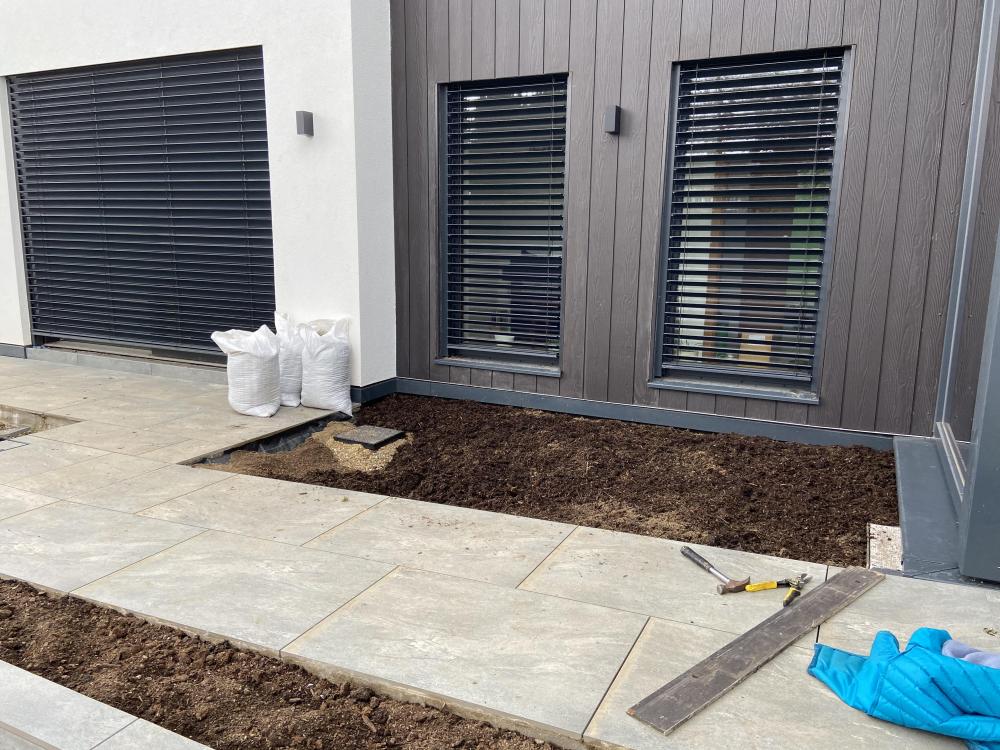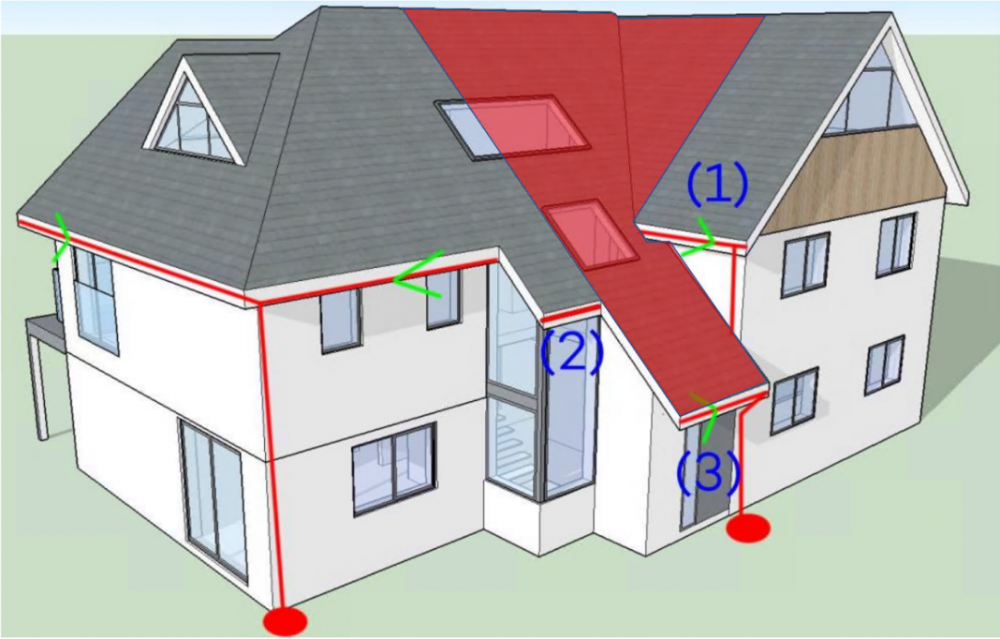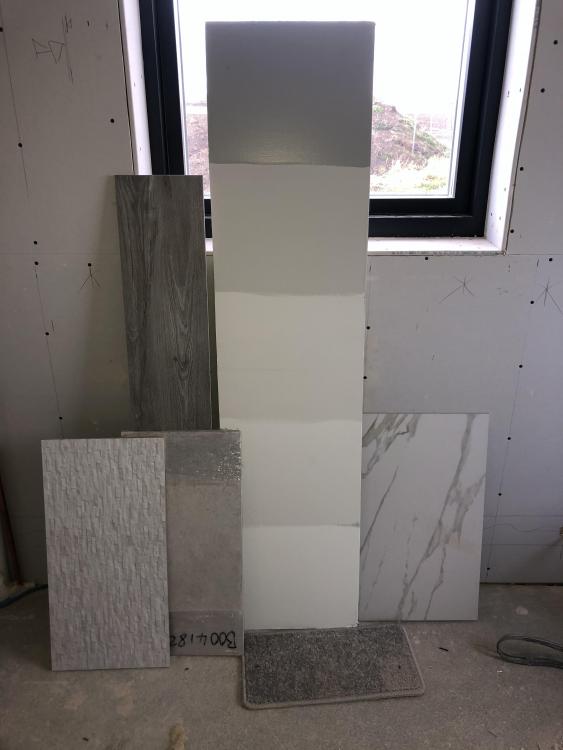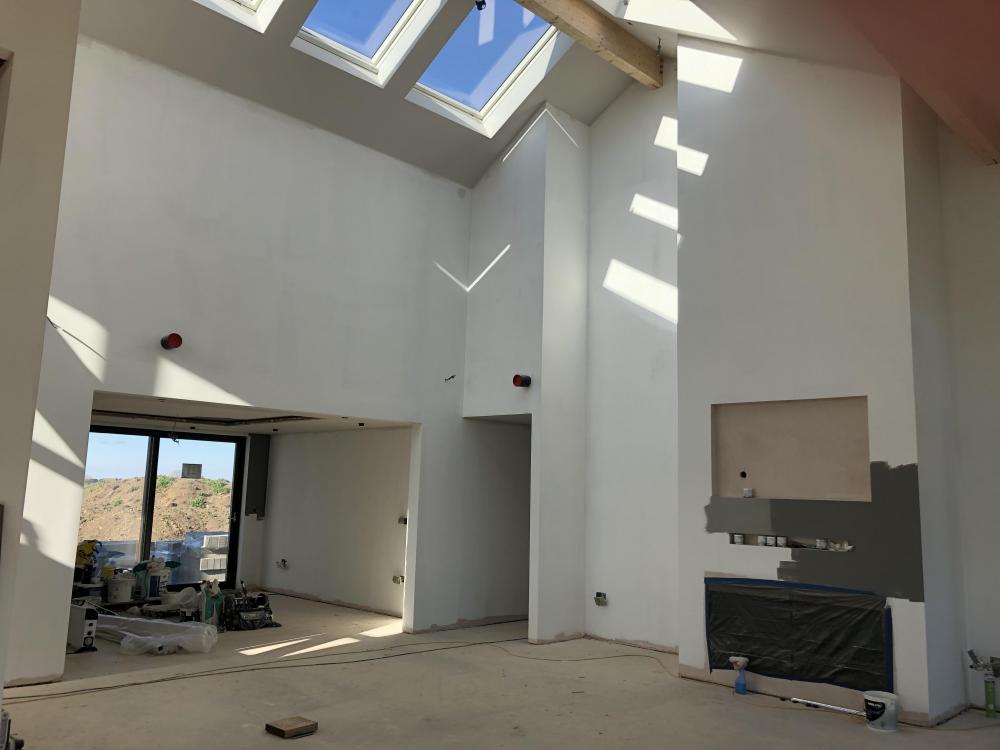Leaderboard
Popular Content
Showing content with the highest reputation on 03/30/21 in all areas
-
3 points
-
Got this far. Sub base wasn’t exactly level so the thin jablite is not sitting unless you crunch it down onto the stone. So the main layer is a bit up and down wobbly in places. I’m a bit high as well, probably only 75-80mm in free height left for the slab. Hopefully thicker in places where the jablite bends a bit. need to go out and put the DPM over it and backfill the trench so my blocks don’t fall over3 points
-
Hi, We're a family of 4 who relocated to Glenarm, Northern Ireland a year ago with nowhere to live or no jobs...but the risk paid off and we now have a fantastic half acre plot (with OPP) in the countryside, a dog, and hubby has a job. The plan is for me to project manage the build. We've had some floor plans and sketch of our dream home for a few years as this has been a long term dream of ours. Worked with a fantastic architect to turn that into reality and we're now 8 weeks into our RM planning application, expect to hear in another couple of weeks, fingers crossed! We've completed as much pre planning as we can (yes, a huge spreadsheet) and have chosen SIPs@clays to get us to watertight stage, planning direct labour and our own labour to finish. As soon as we get the green light our architect will work with SIPs@clays to get design complete and building control application submitted. We had a ridge height restriction on OPP, so to provide is with the upstairs space we need, we have opted for a 5degree mon pitch sedum roof and plan to clad the house in black corrugated steel - always loved how this reflects the surrounding environment and will fit well in its farm setting. Well that's it for now...sure you'll be hearing a lot more from me as our project proceeds and questions arise. Thanks, Kerry2 points
-
2 points
-
I think you need to clarify whether a crane will be required for the roof trusses because cranes come with special working platform requirements. If a telehandler will do the job then your hardcore area can be simplified. It is not clear from your map where the site access is. Concrete wagons and brick deliveries are the most problematic to deal with. After that the regular Builder Merchant lorries just need a small drive to park on before they use their onboard crane to swing loads onto your site. Scaffolding crews need some space for all their components when they arrive. I wonder if you have a 3rd option, geotex over your current grass drive. The spread different grades are hardcore on top. My site drive and longterm house drive was created in a single day with an expert driver in his mid sized 13? ton digger. The area was an L-shape measuring 19m x 12m. By the time I arrived on site at 11am digger man had scraped the whole area down to a level and was waiting for the first hardcore delivery. From memory it took 7 lorry loads of hardcore delivered over 4 hours to form the drive. To finish off he spent another hour driving his digger over and over the surface to firm it up. Job done. Total cost about £2000 in hardcore + £500 to the digger man for his time and machine.1 point
-
I would ask about notching the top of the position joist or redesigning them to be 225 high where they go in the wall. Unlikely but theoretically possible love the idea of the tony tray ?1 point
-
1 point
-
The joist lift is a pain in the arse for brickies either way and they will have priced for a fair amount of faffing about you would have thought. To give you an idea the joist lift on mine was £3500 (labour) vs £5k for the 1/2/3rd lifts.1 point
-
I would use flooring grade T&G chipboard 18mm. The sheets glue together with pva and are 0.6m x 2.4m (1.44m2) Best to lay some thin polythene over the insulation first so it does not abrade.1 point
-
You can use joist end caps - only cost £4/5 each depending on size. I have used them on mine and can grab some photos when back to site tomorrow if you want? These allow for the timber shrinkage and have a foam airtight seal facing the block.1 point
-
The steels should be resting on high density padstones or pre stressed heads cut to size, not ordinary blocks. I can't tell from the photos what kind of blocks they are. Also, it would be better to use resined in bolts rather than expansion bolts. Either way, they need to be redone.1 point
-
1 point
-
Take a look at this thread, which references several others that have taken a similar approach.1 point
-
its not the unloading that’s the problem, it’s the plastic lunch boxes etc that the drip dry on the worktop above looking a mess. And the stuff that sits around whilst it runs it’s 3 hour cycle. Occasionally I just want a clear work surface. and we have to run it 2 or 3 times a day when we have overnight guests and there’s 8-10 of us in the house. Not a problem at the mo obviously.1 point
-
1 point
-
1 point
-
1 point
-
The cavity wall PIR insulation is often T&G. The floor usually isn't. In a cavity wall the T&G help to hold the insulation together and keep the cavity part clear. This isn't an issue in a floor.1 point
-
I wired a house a while back where the ground workers had assumed a 100mm frame and built with 100mm block, but the frame arrived as 140mm. 15 years later the house has not fallen down yet.1 point
-
Yes, even better from a u-value. Just make sure it's floor EPS which can take the load. Don't go buying roof EPS.1 point
-
Use 300mm EPS instead of the PIR (or have you bought that already?)1 point
-
Think about it, when you're old, the carer / those same two youngsters will be able to sit you in a garden chair and hose you down! Tbh the nominal fall area is 4x4 tiles so circa 1320x1320mm. The reality is the splash zone IF careful is one tile beyond. However...No1 son uses the rainfall exclusively so it's a bit more. No.2 daughter uses the handset and somehow manages to get the bog roll wet on occasion! We put up with it as it's so easy tbh. Use a small sqeegee on the floor afterwards then kick your towel around. There's strong points in the wall where the vertical mosaics are should we ever decide to fit doors or folding screens.1 point
-
one of these, very common and easy to repair or replace. https://www.victorianplumbing.co.uk/cruze-round-2-outlets-thermostatic-bar-shower-valve?campaign=googlebase&gclid=Cj0KCQjwmIuDBhDXARIsAFITC_5ufWKKayPjppICKSXCORXaqkVChXNztaPnpe63DH9nLCDeXSSSjg0aAhfrEALw_wcB&gclsrc=aw.ds1 point
-
Lovely cat slide roof! There is a lot of roof area going into gutter (3). Being above the front door you definitely don't want this overflowing. I think @PeterW is right, you'll need a deepflow gutter to handle the intake. Worth also looking at square cross-section guttering as may work better with the aesthetic and it also has higher capacity. You'll need that velux to be very well fitted as I expect in downpours you'll have water approaching it from the valley.1 point
-
I have concealed with a riser rail/handset hose and then a rainfall head. I'm not looking forward to it going wrong. At best it's prise off the cover plate that's been "lightly" siliconed (in a horseshoe): I've made provision that I can get tools (box spanners and large sockets in there). At worst it's tile off, cut through the board to get to the compression fittings on the mixer valve. I've no pipe joints in the wall "other than" at the mixer and outlet (soldered), it's all bent copper: (Testing ?): Then there's the loft plumbing. I'm OK for access at the moment: Imho concealed looks better (from a distance ?): If I'd have fitted the water softener by now it would have likely held off "problem" day which with the hard water here I'm fully expecting.1 point
-
I was just thinking about this further. My other half insist we get a shower with a rail (that can be varied in height) in addition to the rainwater shower head that comes out of the wall. But in that case, doesn’t it make sense to go exposed as that way the pipe for the rain shower can double up as a rail, a bit like this: https://www.lussostone.com/showers-c6/shower-sets-c24/elegance-brushed-gold-exposed-thermostatic-bar-shower-with-riser-p18571 point
-
@DamonHD, Thanks for the link; the site needs a proper review. IMO some form of demand-side adaptive use is a good tool to help get us towards a zero carbon goal, and ToU pricing is one good mechanism to implement this. AFAIK, the Octopus Agile tariff is the first such UK offering available to consumers. I also believe that members of this site -- those with the drive to self-build -- will tend to be early adopters of ToU services. This particular thread is branching into various facets, because of the various usecases that might apply here, and the sweet spot is going to be different depending on individual circumstances and abilities. For example in my case, my annual energy bill is about half of my annual council tax bill and my current energy solution doesn't need third party maintenance or material related consumables , so another 30% savings, say, would be a very small change to our overall outgoings. So to the usecases: Many here will have PV and some Tesla PowerWall-style storage. Maybe more so in the future the "powerwall" will be a flatpack with a wheel at each corner and only plugged in when not taking the occupants out and around ? These are capital intensive and complex systems, and merit a separate thread / discussion, I think. At the other extreme, many will find the challenges of adaptive demand to match ToU in the "just too hard" category. Many will be comfortable with adopting essentially static time-of-day strategies that can be implemented with simple timers etc. That's what we do to make best use of our current E7 tariff: Most of CH, all of our DHW, our washing machine and dishwasher use E7 cheap rate electricity, and this drops our energy bill by ~30% compared to an equivalent single rate tariff. Where things start to get really complicated is when you wish to adapt your household demand truly dynamically to daily ToU pricing, and one option here seems to be the way OVO is going and to use a third-party (e.g. energy provider) AI-based service and allow it to schedule your devices and internal services through technologies such as Alexa. This will be the simplest option for many consumers but this one gives me the willies, personally, because of the security, privacy and 3rd-party continuity risks. Another alternative is to have a largely independent system within the household the executes control locally and only depends on open (therefore easily replaceable) and usually free external services, but with all of the smarts running on a computer within the household. I am also IT literate and a strong programmer, so this is the option that I am most comfortable with, and one that I wish to promote and to support /help any other members that are thinking of going this route, but again perhaps the details merit a separate thread / discussion. What I will say here is that there is now a bunch of cheap and incredibly powerful options (e.g. RPi, Home Assistant, ZigBee / ZWave and loads of devices that employ these, REST-base webservces) that make this very feasibly for anyone with some IT literacy and very basic programming skills to go this route. Perhaps others can expand on cases that I have missed.1 point
-
1 point
-
You save half your "cup miles" as 90% of the crockery etc only have 2 locations. In use or in a dishwasher. The extra journey to and from the cupboard is gone. The big unload that nobody likes doing is now just about 10% of contents because everything else has been taken out when it was used. Unexplained benefits: The pile of unwashed stuff in the sink seems to have disappeared. When we run the dishwasher now it's always nearly completely full, I don't know why. There is presumably a saving only doing full loads. You have a backup in case of failure. Nobody want's to have the victorian horror of hand washing a cheese scoop or a strawberry fork.1 point
-
1 point
-
When it goes wrong you want exposed, ideally with all gubbins freely accessible including brain and joints, pump etc1 point
-
Great to see you've made progress, I know how busy it's been for you and how difficult your site access is. Completely agree about missing Mr Harris, Russell is doing a great job but it's a hard act to follow.1 point
-
1 point
-
Well I'm Irish and digging holes or shouting at men digging holes for 25 years and I have never worked less than a 10 hour shift .. And I've never seen or tolerated any drop off in productivity. Currently have 300 men out on sites and come 5 o clock everyman is still hard at it or at least better be good at pretending to be ....1 point
-
1 point
-
Exciting time, look forward to seeing some pics1 point
-
Congratulations ..! Time to crack on then..! Got any photos of the planned build and site ..?1 point
-
Hi, I've not been on a while as we have been waiting on approval of Reserved Matters before being able to progress, well, last Wednesday, after eight months rather then 8 weeks, we received full approval. We did have to make one set of changes (they were submitted in September) - lower half clad in stone, some changes to window design - but we are over the moon that we can get started! The planning delay has been very frustrating and has cost us thousands (eg SIPs cost has increased due to rise in materials costs), but we are here now and cant do anything about that, so onwards and upwards!1 point
-
I think I'll be needing that by the time I get this build completed! Two boys, 9 and 12. Somehow they manage to flood a bathroom with a fully enclosed shower. It's chaos. I might put a drain in the floor for squeegeeing away the floods mind you.0 points
-
0 points



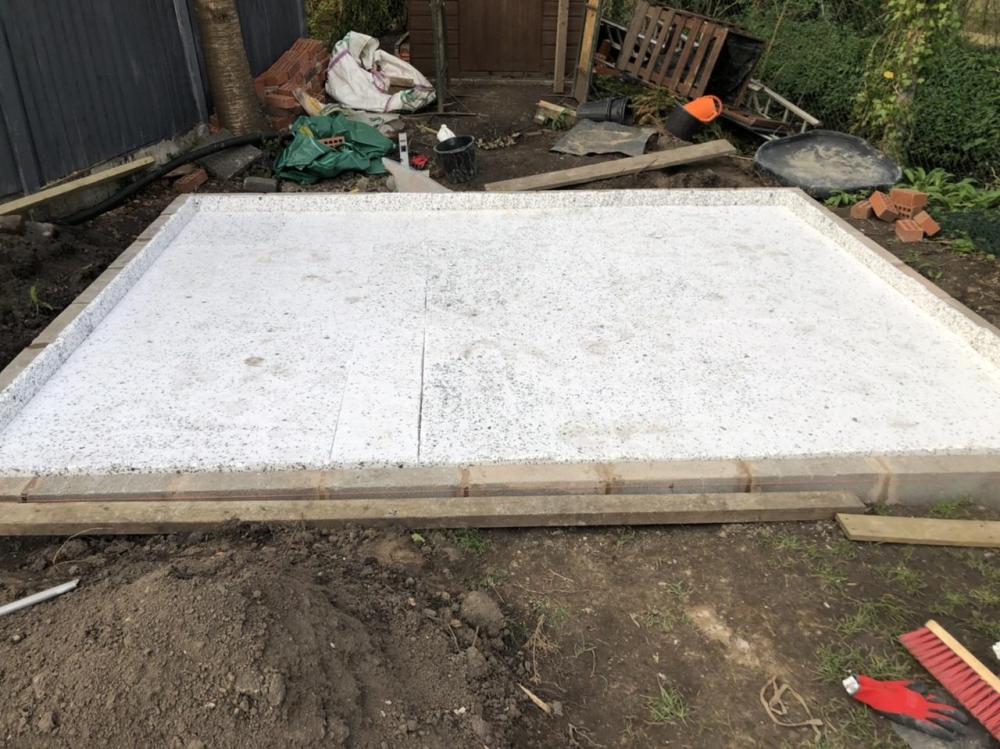
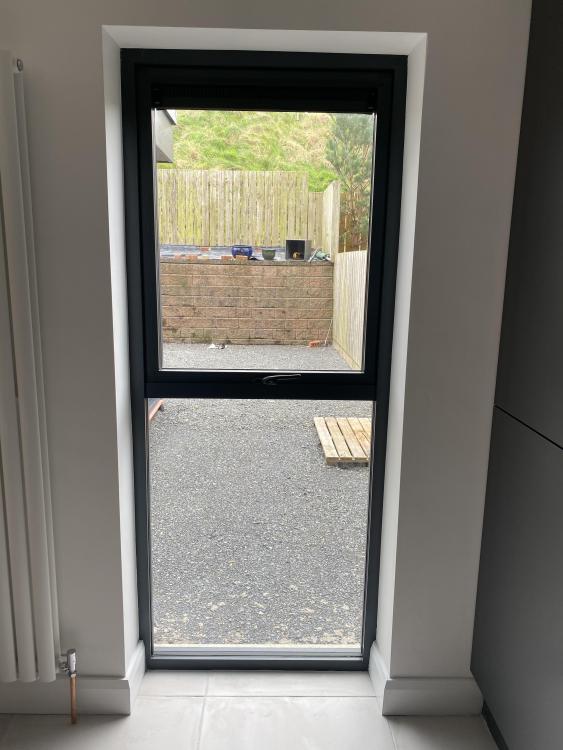


.jpg.c21f3ac78c9b7efd90cbdcb312744dc5.thumb.jpg.7adcad4c0e384f5ecd7d56b0618df6e5.jpg)
